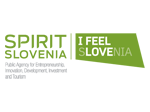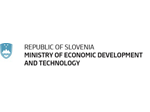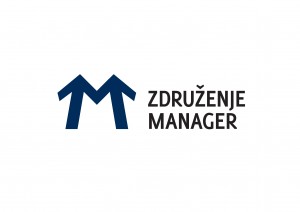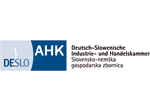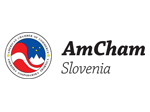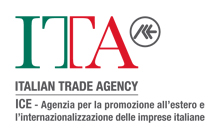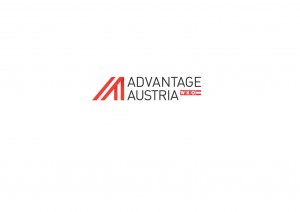Interview: As a Small Country, Slovenia Needs Focus to Become More Competitive
- Written by Brane Krajnik
- December 16, 2015 at 2:36 pm
-
Spaniard, Arturo Bris, is a researcher and professor at Switzerland’s IMD and Chairman of the World Competitiveness Center (WCC), which, every year, announce their annual world competitiveness rankings. The IMD World Competitiveness Yearbook measures how well countries manage their resources and competencies to facilitate long-term value creation. As part of its ranking of 61 economies for 2015, the IMD WCC looked at several aspects of each country as a place to conduct business. As highlighted by Professor Bris, Slovenia improved its economic performance in 2015 however, the level of attractiveness for foreign capital remains low, in part due to the under-developed capital markets and significant corporate corruption.
1. The IMD ranking reflects over 300 criteria based on statistical indicators and an exclusive IMD survey of 6,234 international executives. Can you highlight the most important indicators and explain how the survey was undertaken?
The IMD World Competitive Ranking is based on a simple model. In a country, we look at the quality of the government, the quality of the infrastructure and the efficiency of the private sector. All these indicators result in the performance and rating of the economy. We combine these indicators with a survey because there are some factors in a country that you cannot measure, for example corruption. It cannot be measured because when it happens you can identify it, but when it is not reported but happens you cannot identify it.
2. What is the proportional number of executives participating in the survey per country and what was the number for Slovenia?
Proportionally it is difficult to say because we conduct our survey mostly with IMD Alumni. We do this survey between January and April every year. In total, we have about 20.000 respondents to our survey worldwide. The response rate for Slovenia was between 50 and 100 executives, not necessarily all of them are from Slovenia; it included people operating in the country but not necessarily locals. For example, in China most of our respondents are non-Chinese but they work in China for international companies.
3. The 2015 IMD World Competitiveness Yearbook has Slovenia at 49th in the overall competitiveness rank from the 61 countries. Slovenia gained six spots from 2014 (55th to 49th), what contributed the most to this positive move?
The best performing indicator for Slovenia in 2015 is the quality of the government – the quality of the public sector. There is a more positive perception in the business community about what is happening with this government in terms of regulation and a more business-friendly environment. Within the society there is more cohesion, a better attitude toward globalisation and more internationalisation of people. However, Slovenia’s ranking is still relatively low but it has improved a lot. Overall, the economic performance of the country was much better in 2015 than in 2014. While the country had negative GDP growth for some time, the growth is now positive. Employment has also improved, with this ranking the country has moved from 51st to 48th and the domestic economy moved from 58th to 49th. However, economic performance is not enough to state that a country is competitive.
4. In terms of Slovenia’s investment landscape, the IMD report presents a mixed picture. Slovenia’s trade to GDP ratio remains strong, the international trade sub-factor ranks highly at 18th (of the 61 economies), but Slovenia’s international investment sub-factor ranks at 59th! What is the cause of such a low ranking and on what basis has IMD made this assessment?
It is part of the so-called European solution to the crisis. Slovenia does export more and in this way it is competing better but the country does not attract foreign capital and that is the negative side. Slovenia remains number 59 in the world which is the third from the bottom. The reason is that Slovenia is a small country and, as such, competing for international investment with the big bulldogs of the Euro area; Germany, France, Italy or Spain.
5. Switzerland is also small… What can we do to improve the environment for foreign capital so that Slovenia will become more attractive?
If you look at the top ten countries in our ranking; among them are, of course, the U.S. and Germany but also four small countries: Hong Kong, Singapore, Denmark and Switzerland. What makes these small countries successful is specialisation, focus and that is what Slovenia needs. Everyone knows the most important industries in Switzerland: high-end technology (e.g. watches), pharmaceutical companies and Nestlé, consumer good products – these are three industries that do not require any specific natural resources. Switzerland grew using the only resource it has, that is people and what people invent. Switzerland is like Slovenia, a mountainous country. There is no significant land for agriculture, you do not have oil, but what you have is people and the country should naturally focus on inventing and that is success.
6. “Competitiveness” of nations is defined as the ability of creating wealth and welfare. When rating competitiveness, how much weight do you put on the debt metrics?
Competitiveness means prosperity: welfare and creating jobs. On this point, obviously debt is an obstacle to competitiveness. But you have to differentiate government debt and corporate debt. The first one is an obstacle for competitiveness and the second one is needed, companies need debt to operate. Only those countries that make debt accessible to SMEs and have a good banking system have a competitive economy. Even though a European environment, we identify Slovenia as a relatively under-developed capital market. SMEs in Slovenia do not have access to finance and it is an important factor for the rescue of the Slovenian economy. Slovenia rates the worst in the world in the ranking of corporate governance, which means supervising that companies use money effectively. It is important that you do not provide financing for the companies that are not trustworthy, because money is not stupid. The level of corporate corruption in Slovenia is extremely high and consequently, there is no trust in the economy. Slovenia still has some sectors, e.g. banking and telecommunications, controlled by the government. Nevertheless, one of the key messages we always convey is that the government does not create the jobs in the country. The government passes regulation and creates the conditions so that the private sector creates jobs.
7. How can a country’s image abroad influence its future competitiveness?
We recently conducted a study and found that the best predictor, in the long run, is the image of a country abroad. Italy, as an example for 2015, has improved their image abroad exceptionally and consequently their competitive ranking. So the model is: improve the image of a country and foreigners will come and bring capital and this will pool domestic investments and will empower local entrepreneurs to create jobs. This is why the image of a country is the main driver of competitiveness.
8. Could the refugee crisis have an impact on the competitiveness of European countries?
We found that countries which remain more closed to foreigners tend to be less competitive. In order for a country to generate jobs, have a good health system, education system and public sector, you need people that work and pay taxes and you can achieve that with people and openness. In addition,migration brings talent that you do not have in a country in terms of introducing skills that a country needs. Switzerland has been somehow open for foreigners in the last 50 years and has attracted the type of people that the country could not provide – construction workers, manufacturing workers, service employees and that is something that the education system could not provide.
9. Is there, however, an ‘infection’ point in the number foreigners a country can accept?
Of course, we can be super open, an “Alice in Wonderland” type of economy but, at the end of the day for the small country like Slovenia, it is a much bigger challenge than for countries as large as Germany and France. Certainly there is a limit to the amount of people one country can attract and I think the limit has to be about how many people can be employed and provide good enough living conditions to survive. Because Slovenia is a small country, it needs to protect its own economic environment.
Source: The Slovenia Times
Photo: Aljaž Hafner

















